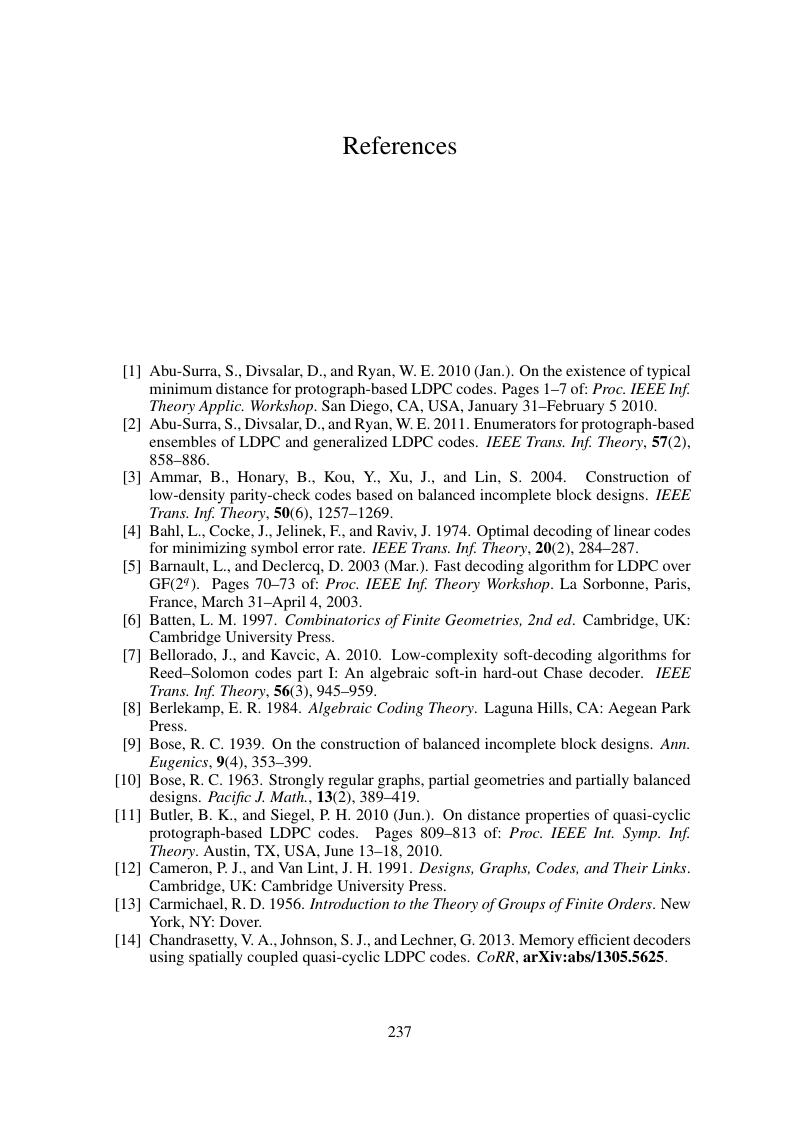Book contents
- Frontmatter
- Contents
- Preface
- 1 Introduction
- 2 Definitions, Concepts, and Fundamental Characteristics of LDPC Codes
- 3 A Review of PTG-Based Construction of LDPC Codes
- 4 An Algebraic Method for Constructing QC-PTG-LDPC Codes and Code Ensembles
- 5 Superposition Construction of LDPC Codes
- 6 Construction of Base Matrices and RC-Constrained Replacement Sets for SP-Construction
- 7 SP-Construction of QC-LDPC Codes Using Matrix Dispersion and Masking
- 8 Doubly QC-LDPC Codes
- 9 SP-Construction of Spatially Coupled QC-LDPC Codes
- 10 Globally Coupled QC-LDPC Codes
- 11 SP-Construction of Nonbinary LDPC Codes
- 12 Conclusion and Remarks
- Appendices
- References
- Index
- References
References
Published online by Cambridge University Press: 15 December 2016
- Frontmatter
- Contents
- Preface
- 1 Introduction
- 2 Definitions, Concepts, and Fundamental Characteristics of LDPC Codes
- 3 A Review of PTG-Based Construction of LDPC Codes
- 4 An Algebraic Method for Constructing QC-PTG-LDPC Codes and Code Ensembles
- 5 Superposition Construction of LDPC Codes
- 6 Construction of Base Matrices and RC-Constrained Replacement Sets for SP-Construction
- 7 SP-Construction of QC-LDPC Codes Using Matrix Dispersion and Masking
- 8 Doubly QC-LDPC Codes
- 9 SP-Construction of Spatially Coupled QC-LDPC Codes
- 10 Globally Coupled QC-LDPC Codes
- 11 SP-Construction of Nonbinary LDPC Codes
- 12 Conclusion and Remarks
- Appendices
- References
- Index
- References
Summary

- Type
- Chapter
- Information
- LDPC Code Designs, Constructions, and Unification , pp. 237 - 243Publisher: Cambridge University PressPrint publication year: 2016



